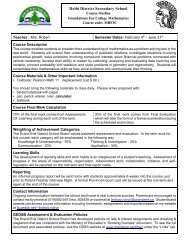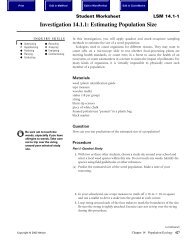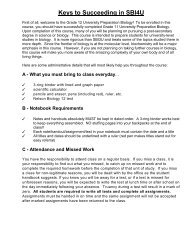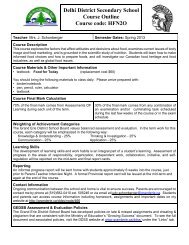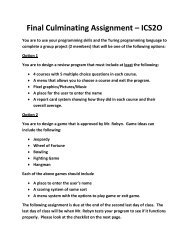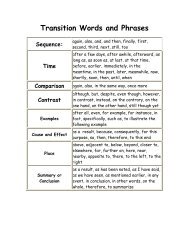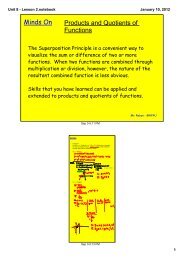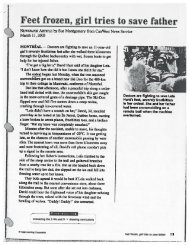Chapter 11.pdf
Chapter 11.pdf
Chapter 11.pdf
- No tags were found...
You also want an ePaper? Increase the reach of your titles
YUMPU automatically turns print PDFs into web optimized ePapers that Google loves.
Using the Law of ReflectionThe law of reflection can be written using mathematical symbols. TheGreek letter theta, θ, is commonly used as the symbol for an angle.Subscripts are used to identify the angle. If the angle of incidence is θ iand the angle of reflection is written as θ r, then the law of reflection is:Suggested Activity •D13 Quick Lab on page 428θ i= θ rThe angle of incidence and the angle of reflection are alwaysmeasured from the normal and not from the surface of the object. Thisis because some surfaces are curved, making it difficult to measure anangle from the surface.Plane MirrorsThe law of reflection applies to light rays reflected from both flatmirrors and curved mirrors. Any mirror that has a flat reflective surfaceis called a plane mirror. When you look into a plane mirror, yourimage appears to be as far behind the mirror as you are in front of it. Infact, the mirror may appear to be a kind of glass window. However, it isnot possible to catch this image on a piece of paper placed behind themirror, since no light from the object reaches this point. Because thelight rays are not coming from where your image appears to be, we saythat your image in a plane mirror is a virtual image. A virtual image isany image formed by rays that do not actually pass through the locationof the image (Figure 11.7 below).Image Orientation in a Plane MirrorWhen you look in a mirror, your left hand appears to be a right hand. Ifyou hold a textbook up to a mirror, you will notice that the text appearsto be reversed. Sometimes, emergency vehicles are labelled in reverseprinting so their signs can be read in a car’s rear-view mirror, as inFigure 11.6.The ray diagram in Figure 11.7 shows why this happens.To understand how the image forms, we draw a few rays fromvarious points on the girl’s face, and reflect them into hereyes. There is only one rule — the rays must follow the law ofreflection. Once we have done this, we have shown the actualpath of the light rays.What does the girl see? To find out, we can extend thereflected rays back in a straight line behind the mirror toform the virtual image. So when the girl looks in the mirror,the image of her right eye is directly in front of her right eyein the virtual image. If she lifted her left arm, the arm in thevirtual image would lift directly in front of it. The virtualimage is an exact reflection of the real object.Figure 11.6 Reverse printing will beread normally when viewed in amirror.Figure 11.7 A ray diagram shows how avirtual image forms in a plane mirror.Ray diagrams model the behaviour of light in mirrors and lenses.419



